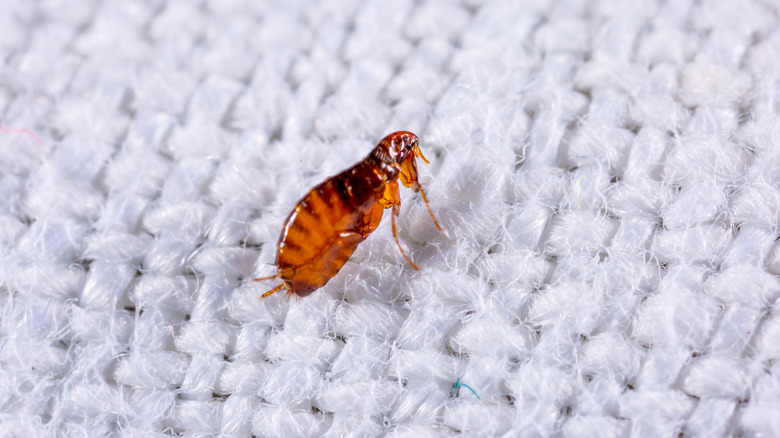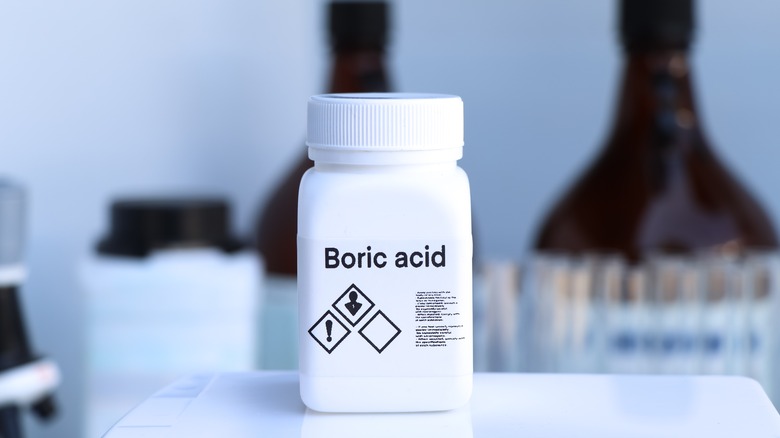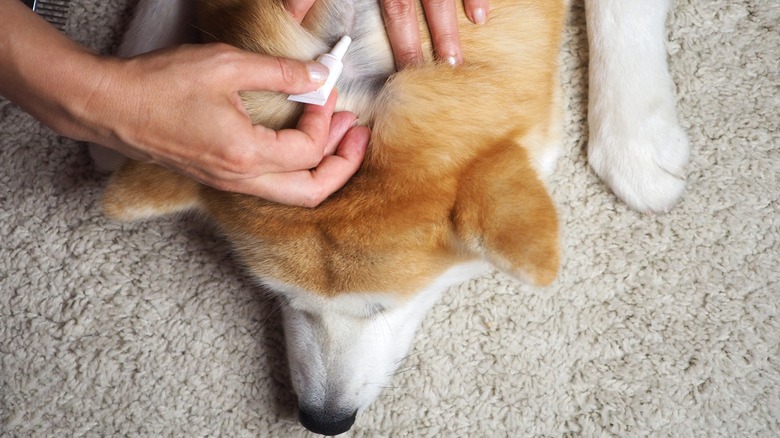Think Twice Before Using This Secret Ingredient To Get Rid Of Fleas
There are few things more frustrating to deal with than a flea infestation. Not only do you, your family, and your pets have to deal with uncomfortable flea bites, but you also have to find the best and safest way to eliminate the pests quickly. While boron-based products like borax and boric acid are popular flea treatments, they have downsides and need to be used with caution and likely in combination with other products.
Fleas (insects in the order Siphonaptera) are common parasites on cats and dogs. Because the average female flea can lay 600 eggs during her life, a small flea problem can quickly become a large problem if it isn't treated promptly. Adult fleas feed on blood from their hosts but can survive for months between meals if necessary, making it easy for pets to become reinfected if you don't kill or remove the pests from carpets and other surfaces.
Advantages and disadvantages of boron for flea control
Both borax, which is a salt made of boron, sodium, and oxygen, and boric acid, which is made of boron, hydrogen, and oxygen, are naturally occurring; this can give the impression they are harmless. While there are many ways to use boric acid and borax at home, and they are common household products, that doesn't mean they're risk-free. Poison Control notes that compounds containing boron, like borax and boric acid, can be poisonous and should not be inhaled or eaten. They can also cause skin irritation. Infants are especially sensitive to exposure, so care should be taken when using boron products in homes with small children.
While boron-based products can be a helpful part of getting a flea infestation under control, these products only work when ingested by fleas. This means they are useless against larvae, as adult fleas only eat blood. Regularly using borax or boric acid in powder forms can also eventually damage furniture and carpets, so Texas A&M Agrilife Extension recommends picking shampoo-based products over powders.
Best practices for flea control
Successfully getting rid of fleas in your home requires a multipronged approach. Give your pet a flea treatment recommended by their veterinarian, and use a flea comb to remove any remaining fleas from their fur. The veterinarian may also recommend pills or collars to prevent your dog or cat from being reinfested. In addition to treating the fleas on your pet, vacuum your carpets regularly, and be sure to clean out your vacuum bag or canister to prevent the pests from living there.
A boron-based carpet shampoo can be a good option, as long as you follow the instructions and warning carefully and remember it will only kill larvae, not adults or eggs. Products containing the pesticide Pyriproxyfen can be useful as it kills eggs in addition to larvae. Don't forget to wash all bedding, especially your pet's bedding, in hot soapy water as well.
After you have treated your house and pets, continue vacuuming regularly. Vacuuming alone has been found to remove up to 60% of flea eggs from carpets, according to Texas A&M AgriLife Extension. Be prepared to repeat treatments as directed as fleas in the pupal stage are often unaffected by flea treatments.



